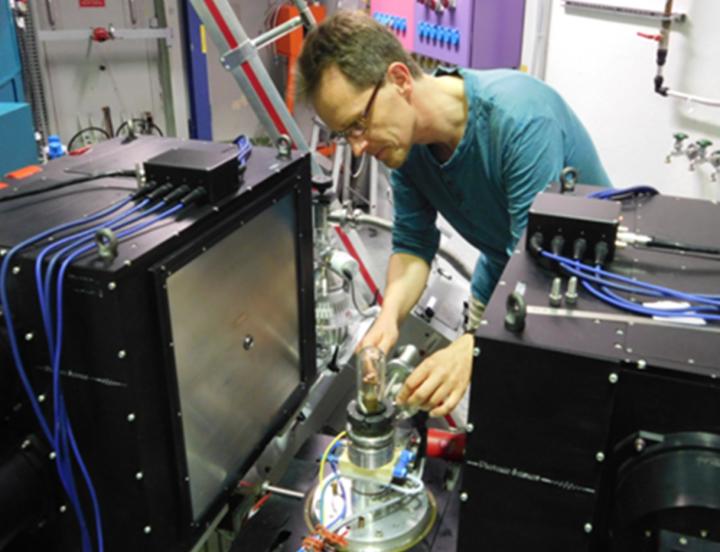
Credit: HZB
A good ten years ago, research teams discovered the class of semi-organic halide perovskites, which are now making a rapid career as new materials for solar cells. The mixed organic-inorganic semiconductors achieved efficiencies of over 25 percent within a few years. They take their name from their basic structure, which is very similar to that of the mineral perovskite (CaTiO3), but contains other components: halide anions, lead cations and organic molecular cations.
In the case of the most important compound of the class, methylammonium lead iodide CH3NH3PbI3 (usually abbreviated as MAPI), which was also studied here, the molecular cations are methylammonium cations and the anions are iodide anions. Although more than 4000 publications on halide perovskites have appeared in 2019 alone, it has not yet been possible to fully understand their structure. In the case of MAPI this was attributed, among other things, to the fact that they are produced as polycrystalline films at elevated temperature and it was assumed that twinning occurs when they are cooled to room temperature.
The formation of twins is complex and can significantly change the material properties. It is therefore exciting to investigate this process more closely. “We have now crystallised MAPI at room temperature and analysed the crystals thus formed with the Laue camera Falcon on BER II,” says Dr. Joachim Breternitz, HZB. Together with his colleagues Prof. Susan Schorr and Dr. Michael Tovar, he was able to determine from the data that crystals grown at room temperature also form twins. This gives a new insight into the crystallization and growth process of MAPI. “Our results indicate that the crystallisation nuclei have a higher symmetry than the bulk crystals,” explains Breternitz.
With these insights, the synthesis of the technologically important thin films can be specifically optimised.
The neutron source BER II has provided neutrons for research until its scheduled shutdown in December 2019. “This was one of our last experiments at FALCON on BER II and I hope that we were able to make useful contributions right up to the end,” says Breternitz.
###
Media Contact
Antonia Roetger
[email protected]
Original Source
https:/
Related Journal Article
http://dx.




